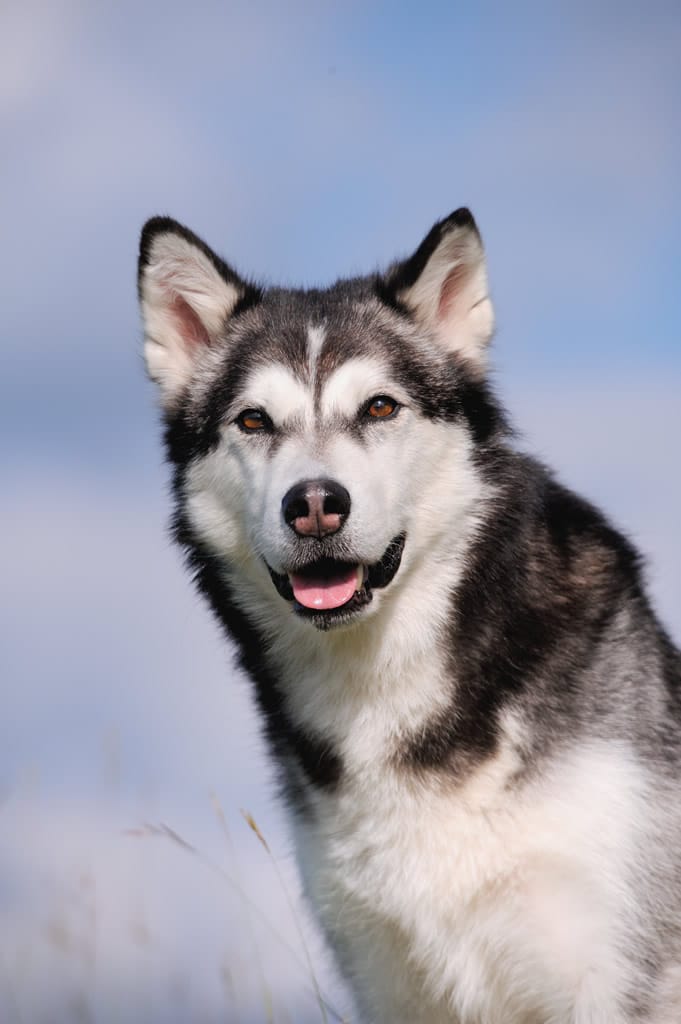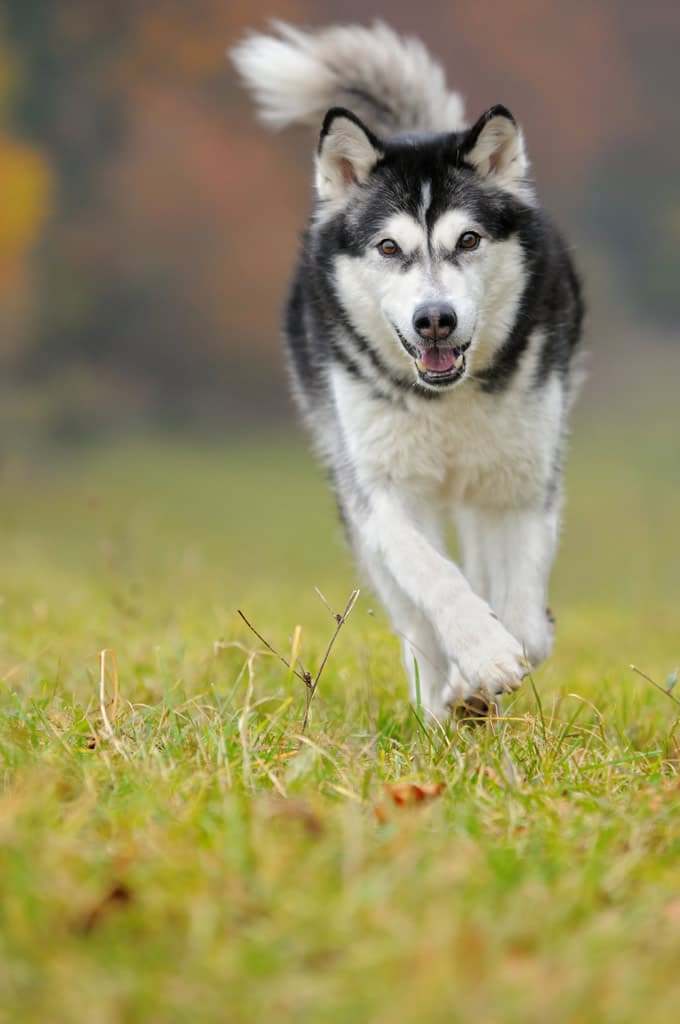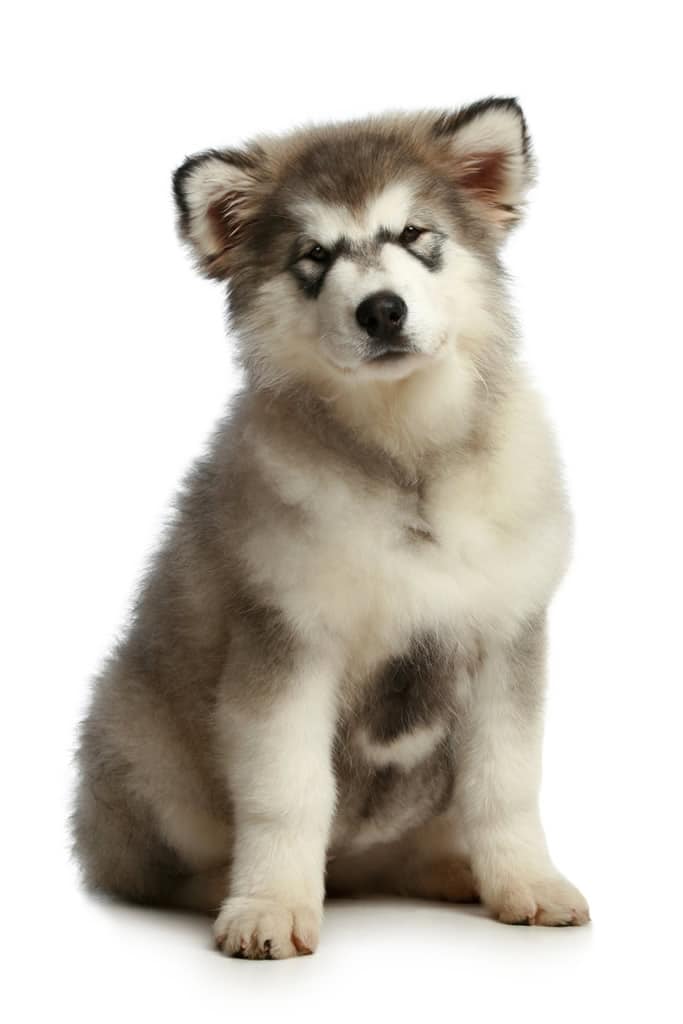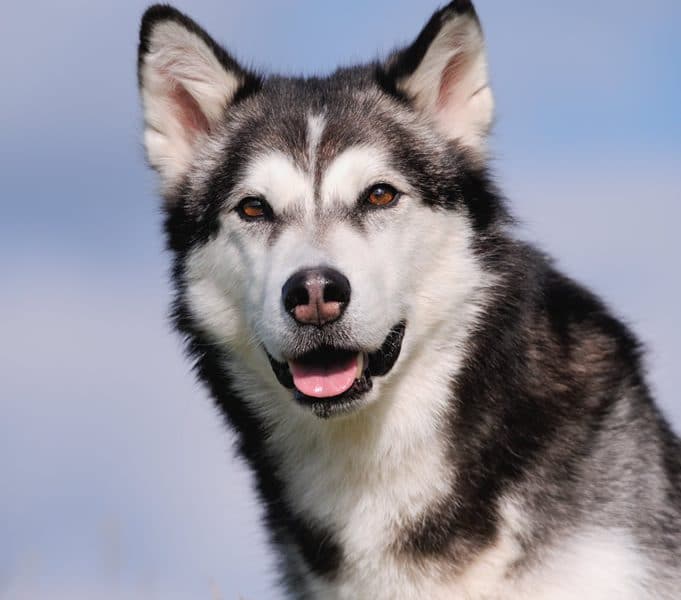
One of the oldest dog breeds, Alaskan Malamutes are descendants of the dogs of the Alaskan Inuit tribe known as the Mahlemut, for whom they served the vital roles of sled dogs, pack dogs and hunting companions. During the Klondike Gold Rush of the late 19th century, Malamutes assisted exploratory expeditions into the Arctic and were also used in World War II as hunting dogs. More recently, the Malamute was named the official dog of the state of Alaska.

Malamutes are a large and powerful breed and although they resemble the Siberian Husky they are bigger in size. The average Malamute weighs between 34 to 39 kilograms and stands 58 to 64 centimetres tall, with males markedly bigger than the females. Their average lifespan is 10 to 12 years.
Deep-chested and heavy-boned, Malamutes have strong legs and tremendous pulling power, which is the main criterion for judging Malamute show dogs. They have broad heads and upright ears, with almond-shaped, dark-brown eyes. This double-coated breed has a thick, coarse outer coat, while the undercoat is dense to insulate it from the Alaskan cold. Their coat also makes them less suited to live in hot climates. They shed their coats year round but heavily during spring and autumn. Malamute’s thick coats need brushing at least twice a week, but during shedding season should be brushed daily.

This is a working breed and needs vigorous daily exercise: long walks in the morning and evening and a daily play session are the least required to keep this breed healthy and happy. This breed is particularly difficult to provide vigorous exercise for. It is within their nature to run and move away from the voice commanding them and therefore they need to be kept on a lead in a secure place which is fenced in.
Malamutes thrive best as companions to energetic, assertive people. They are not hard to train but do become bored with repetitive training. Fun training activities will be required to keep this dog’s interest. They sometimes have a streak of stubbornness and can also be dog-aggressive, especially when it comes to other males. Socialisation should begin early and training should be interesting and challenging. Interactions with other pets, especially smaller ones, should be supervised.
Health concerns prevalent in Malamutes include bloat, hereditary cataracts and hip dysplasia. Other health problems found include inherited polyneuropathy, chondrodysplasia, heart defects, and eye problems.


